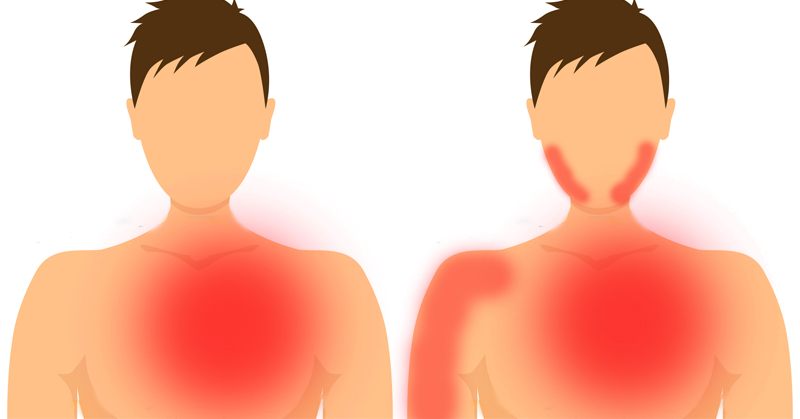Strong pain in the chest, sudden sweating, uneven breathing – these can all be symptoms of a panic attack. Unfortunately, they can also be symptoms of a heart attack. In the event that you or one of your family members experiences these symptoms, it’s important to be able to tell the difference.
Here’s how to tell the difference between a heart attack and a panic attack:
A Heart Attack – Main Symptom Is Constricting Pain

- Those who are experiencing a heart attack describe chest pain as constricting.
- As a rule of thumb, the pain appears in the center of the chest. It can move downward along the left arm and along the back.
- Pain from a heart attack can also spread to the neck, teeth and jaw area.
- The intensity of heart attack pain can change.
- Pain from a heart attack lasts for more than five minutes. It doesn’t typically affect a person’s breathing.
- A person who is experiencing a heart attack may feel a prickly feeling, which is generally restricted to the left arm in most cases. This is often accompanied by a cold, sticky sweat, along with feelings of nausea and throwing up.
- At the peak of a heart attack, a person may experience a fear which is concentrated on the constrictive pain in their chest. They become afraid they might die.
- Heart attack patients may experience quickened breathing when fear from the heart attack provokes a panic attack.
If you, a family member, or a friend experiences these symptoms for more than five minutes, then call an ambulance. Get to the nearest hospital as soon as possible.
A Panic Attack – Main Symptom Is A Prickly Feeling

- Many people are under the misconception that only something horrific or tragic can bring about a panic attack. The truth is, a panic attack can happen in the most ordinary of circumstances.
- The symptoms of a panic attack usually reach their peak after about ten minutes.
- The pain from a panic attack is concentrated in the chest. It rises then falls.
- During a panic attack, a person can experience a prickly feeling and numbness. But these feels are not restricted to the left arm. They can appear in the right arm, legs and fingers.
- During a panic attack, people often experience irrational fears. They might feel like they are suffocating or going insane.
A panic attack may be a symptom of hidden anxiety or chronic stress. Touching the ground, especially laying directly on the earth, is one way to ease your symptoms.
If you aren’t sure what you’re dealing with, see a doctor immediately to be safe. Waiting is never the best solution.
Watch the video below for more information on how to identify a heart attack:
Sources:
Bright Side
Mayo Clinic
Anxiety And Depression Association of America
Healthy Place


